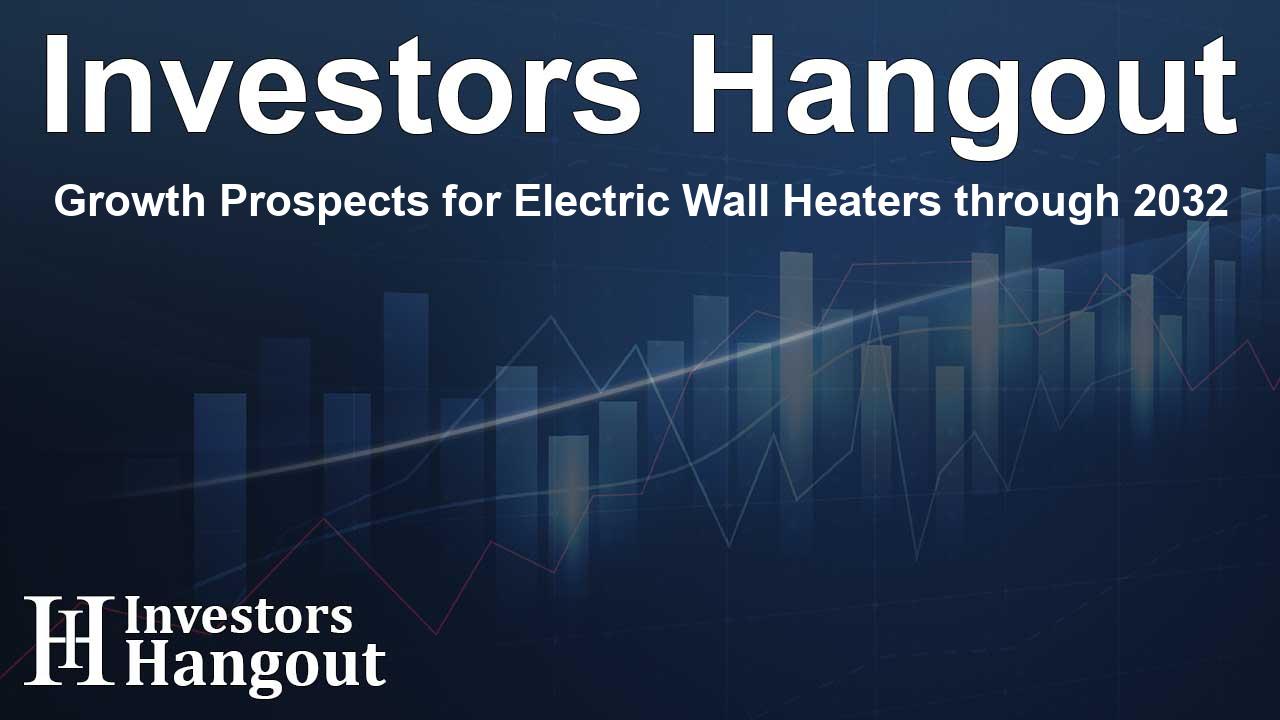Growth Prospects for Electric Wall Heaters through 2032

Electric Wall Heater Market Overview
The electric wall heater market is experiencing a significant transformation, projected to expand rapidly. This expansion is anticipated to push the market size from US$ 3.88 billion in 2023 to an impressive US$ 6.05 billion by 2032, reflecting a compound annual growth rate (CAGR) of 5.06%. This growth is fueled by a surge in demand for energy-efficient heating solutions in both residential and commercial sectors.
Driving Forces Behind Market Growth
Several factors contribute to the increasing popularity of electric wall heaters. One of the most significant is the adoption of smart technologies that enhance convenience and control for users. Modern electric wall heaters now come equipped with programmable thermostats and Wi-Fi capabilities, allowing homeowners to manage their heating systems remotely. This trend towards smart home integration is particularly appealing to tech-savvy consumers aiming for both comfort and energy savings.
Urbanization and Changing Preferences
Urbanization is another driving factor behind the rise of electric wall heaters. As more people move into urban areas, space becomes a premium. Electric wall heaters provide a space-saving solution that can effectively warm smaller rooms without sacrificing valuable floor space. This appeal is particularly notable in garages, home offices, and compact apartments, where the absence of bulky heating systems is a significant advantage.
Market Segmentation Insights
The electric wall heater market is quite diverse, and its segmentation reflects distinct consumer needs. In 2023, the residential segment dominated the market, holding 65.02% of the share. This segment's growth is primarily due to the ease of installation and effective heating capabilities that cater to specific areas within homes. Consumers are increasingly investing in electric wall heaters for their homes, recognizing the combination of efficiency and aesthetic appeal.
Power Requirements and Consumer Choices
The demand for electric wall heaters varies by power specifications, from energy-efficient models below 1000 watts to high-capacity heaters exceeding 2000 watts. In 2023, the 1000 to 1600-watt range saw the most significant growth, as it strikes a balance between power and energy efficiency, satisfying consumer needs in both residential and non-residential spaces.
Regional Dynamics in Market Growth
North America is leading the charge in the electric wall heater market, accounting for 32.12% of the market share in 2023. The region's climate necessitates the use of efficient heating systems, further cultivating the demand for electric wall heaters. In contrast, the Asia-Pacific region is expected to exhibit the highest growth rate, largely driven by the rapid adoption of smart home technologies. Countries like China and India are at the forefront, as consumers increasingly turn to advanced heating solutions.
Recent Innovations and Product Launches
The market is not static; it evolves with the introduction of new technologies and products. For instance, companies such as Marley Engineered Products and Stiebel Eltron have launched eco-friendly electric wall heaters with advanced features. Marley’s innovative heaters utilize recycled materials and advanced insulation technologies, while Stiebel Eltron focuses on smart home integration, allowing users to control their heating systems with voice commands.
Conclusion: The Future of Electric Wall Heaters
As the need for energy-efficient and effective heating solutions increases, the electric wall heater market is poised for substantial growth. With technological advancements continuing to support consumer demand, the market outlook remains positive. Stakeholders and consumers alike will benefit from the ongoing innovation and improvements within the industry, ensuring electric wall heaters remain a preferred choice for many.
Frequently Asked Questions
What is the projected market size for electric wall heaters by 2032?
The electric wall heater market size is projected to reach US$ 6.05 billion by 2032.
What factors are driving the demand for electric wall heaters?
Key drivers include urbanization, rising consumer preference for energy-efficient products, and the growing trend of smart home technologies.
Which region currently dominates the electric wall heater market?
North America leads the electric wall heater market, holding a significant share due to its climate and consumer preferences.
What power range is most popular among electric wall heater consumers?
The 1000 to 1600-watt range has gained the most popularity, offering a balance of energy efficiency and effective heating capacity.
Are there any recent innovations in electric wall heater technologies?
Yes, companies like Marley Engineered Products and Stiebel Eltron have introduced eco-friendly models with smart home integration features, emphasizing energy efficiency and control.
About Investors Hangout
Investors Hangout is a leading online stock forum for financial discussion and learning, offering a wide range of free tools and resources. It draws in traders of all levels, who exchange market knowledge, investigate trading tactics, and keep an eye on industry developments in real time. Featuring financial articles, stock message boards, quotes, charts, company profiles, and live news updates. Through cooperative learning and a wealth of informational resources, it helps users from novices creating their first portfolios to experts honing their techniques. Join Investors Hangout today: https://investorshangout.com/
Disclaimer: The content of this article is solely for general informational purposes only; it does not represent legal, financial, or investment advice. Investors Hangout does not offer financial advice; the author is not a licensed financial advisor. Consult a qualified advisor before making any financial or investment decisions based on this article. The author's interpretation of publicly available data shapes the opinions presented here; as a result, they should not be taken as advice to purchase, sell, or hold any securities mentioned or any other investments. The author does not guarantee the accuracy, completeness, or timeliness of any material, providing it "as is." Information and market conditions may change; past performance is not indicative of future outcomes. If any of the material offered here is inaccurate, please contact us for corrections.